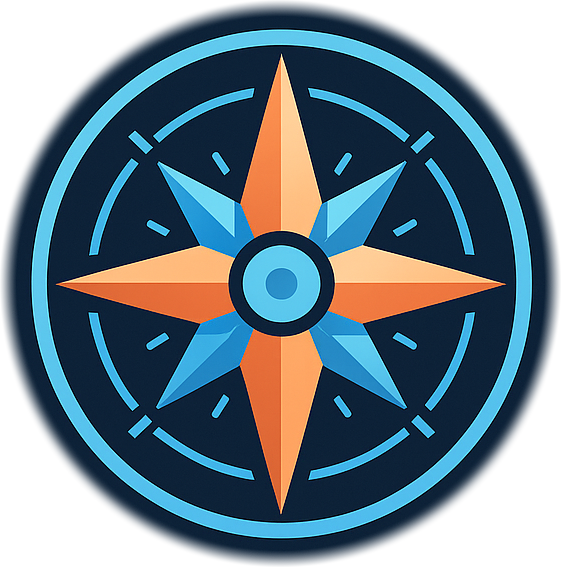A Custom Internal ERP Built Exactly for Your Processes
Start with a fixed-price diagnostic that reveals where you lose money, time, and control. Then we build a unified, scalable platform – ready for artificial intelligence.
Why Now?
A study of seventy-three European mid-size companies shows teams use an average of fourteen separate SaaS applications every day.
Forty-two percent of working time is lost on exports and data reconciliation. Our SaaS TCO calculator will show you how much money you are losing over this.
Licence costs exceed one thousand two hundred euro per month for companies with fifty to one hundred fifty employees. Fragmentation is not only an expense. It is an operational risk: conflicting information, missing audit trails, and lock-in when a vendor changes its interface or pricing.
Our Three Stage Method
Stage 1 – Operational Diagnostic (fixed price)
Duration: two to three weeks
Investment: one to a few thousand euros, depending on your team size
Why this stage matters
A custom internal platform succeeds only when the people who use it every day recognise their own workflow inside the software. Rushing straight to code on the basis of a single stakeholder’s vision may produce an impressive prototype, but it rarely earns adoption. We made that mistake once—building what the business owner imagined, only to discover that the wider team did not trust the tool because key steps in their daily routine were missing. The lesson was clear: understanding comes before engineering.
How we keep everyone on-board
1. Kick-off workshop
• Short presentation that explains goals in plain language—no jargon.
• Anonymous “hopes and fears” board so every role can speak up without pressure.
2. Shadow sessions & interviews
• We observe real tasks at the desk, in the warehouse or on site.
• One-to-one conversations map pain-points and hidden work-arounds.
3. Workflow mapping sprint
• Swim-lane diagrams and simple sticky-note boards capture each step, owner and hand-off.
• Team voting identifies the three biggest friction points to fix first.
4. Solution sketch & validation
• Low-fidelity screens show how the new system will handle the top workflows.
• Live feedback session lets users amend, reject or approve before any code is written.
5. Consolidation report (delivered within ten to fifteen business days)
• SaaS and licence map with cost and overlap.
• Bottleneck analysis and data-loss hotspots.
• Consolidation roadmap ranked by impact and implementation effort.
• Clear recommendation on whether to proceed to build, postpone or refine scope.
Immediate benefits even if you stop here
• A shared, documented understanding of how work really happens—useful for audits and onboarding.
• Early risk reduction: misunderstandings are surfaced while change is still cheap.
• Team buy-in: employees see their input reflected, lowering resistance to adoption.
Skipping or rushing this step may save two weeks on paper, but it often costs months of rework and lost credibility later. A collaborative diagnostic turns the project from “management’s new toy” into “our platform.”
Deliverables
1. SaaS map: every tool, licence, cost, overlapping function.
2. Workflow analysis: manual duplication, data loss, bottlenecks.
3. Consolidation roadmap: what to remove, what to integrate, ranked by impact.
4. Cost comparison: today versus a unified system. Even when direct savings are small, you gain clarity, coherent data, and the technical foundation for future artificial-intelligence projects.
Stage 2 – Custom Internal ERP Implementation
Three sub-phases, total budget ten to fifty thousand euros.
Duration two to nine months – depending on complexity.
- Phase 2.1 – Core system: replace the two to three tools with highest overlap (for example CRM, project tracking, invoicing).
- Phase 2.2 – Integrations: connect the critical applications you must keep (accounting, payments, e-commerce).
- Phase 2.3 – Extension and AI: custom reports, internal chatbot, cross-document search (retrieval-augmented generation).
Stage 3 – Ongoing Support and Continuous Evolution
Monthly retainer (less than one thousand euros) covering:
- Hosting and monitoring.
- Security patches and regulatory compliance.
- Incremental improvements as your business grows.
PROVEN BENEFITS (more than cost cutting)
- Full control: your data stays in your own infrastructure, not in ten external databases.
- Productivity increase fifteen to twenty-five percent: automated flows, no more manual exports.
- Scalability: modular architecture ready to add new domains such as human resources or field service.
- Ready for AI: one single source of truth for agents and analytics.
Our Working Process
1. Thirty-minute discovery call – clarify objectives, collect initial list of tools.
2. Introduce the team – explain we are going to look at how they conduct their daily activities – relieve any tensions.
3. Sign the diagnostic contract – after this we can start working with your team and take notes.
4. Receive the full report within ten to fifteen business days.
5. Decide based on data whether to proceed to implementation.
6. Sign the implementation contract.
7. Build iteratively; every two weeks you receive a live demo instance.
8. Launch internally, measure impact, optimise continuously.
FREQUENTLY ASKED QUESTIONS
Question: What if the diagnostic shows little direct cost saving?
Answer: The report still highlights operational risks and quantifies gains in productivity and data quality. That value alone often justifies the project.
Question: Is the project suitable if we have only thirty employees?
Answer: We have worked with companies from ten to two hundred staff; the key factor is tool proliferation and data volume, not headcount.
Question: Which technologies do you use?
Answer: Back-end Java Spring Boot with PostgreSQL, front-end React, Graph-based APIs; artificial-intelligence modules via LangChain with proprietary embeddings.
Question: Where will the ERP be hosted?
Answer: Your choice—private cloud (AWS, Azure, Orange) or on-premises. You always receive full access to source code and databases.
